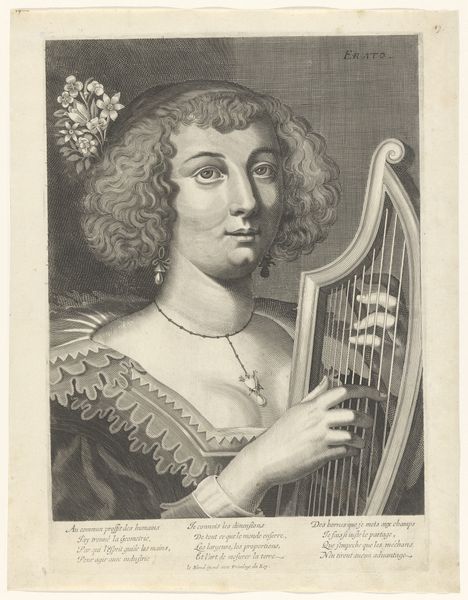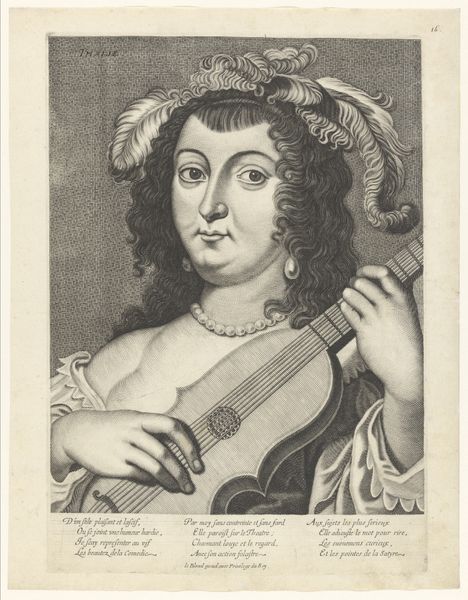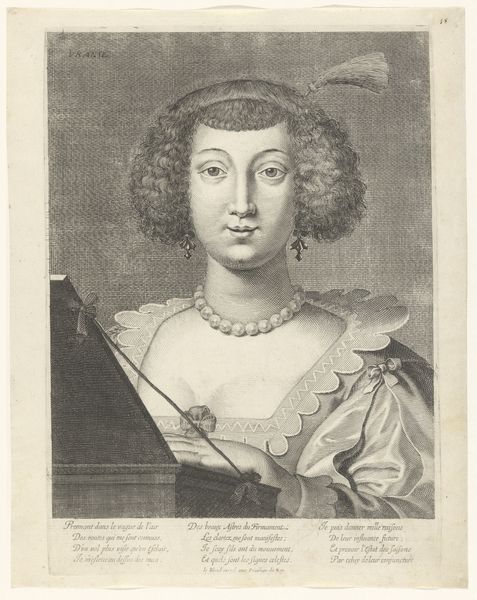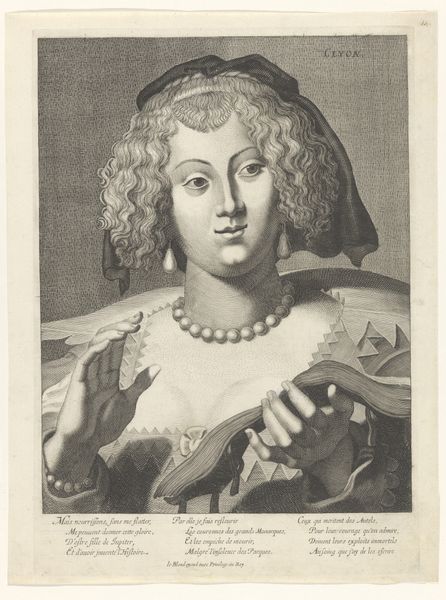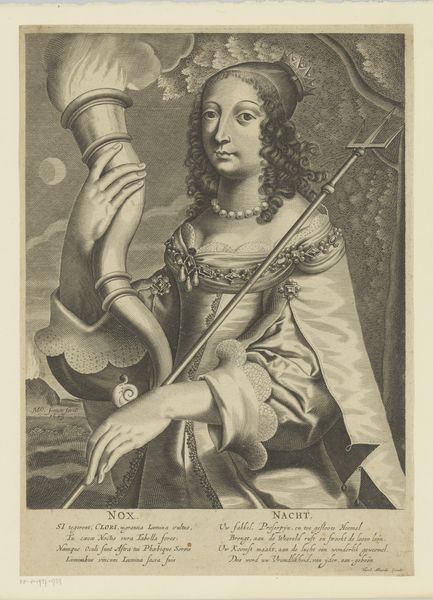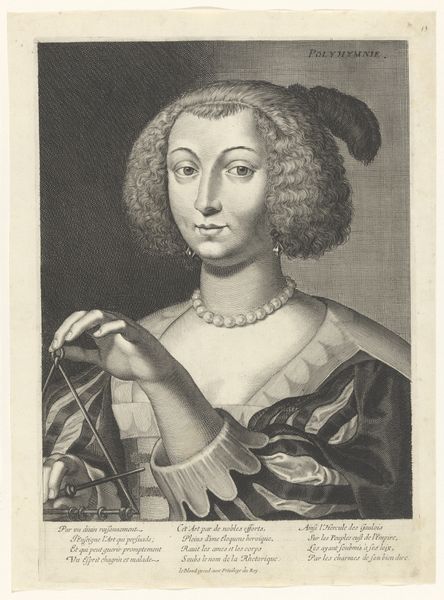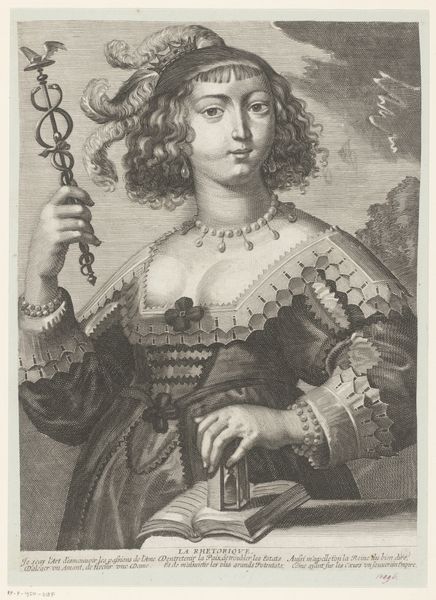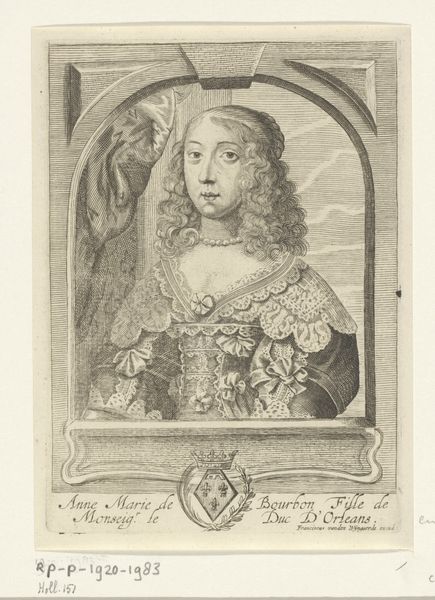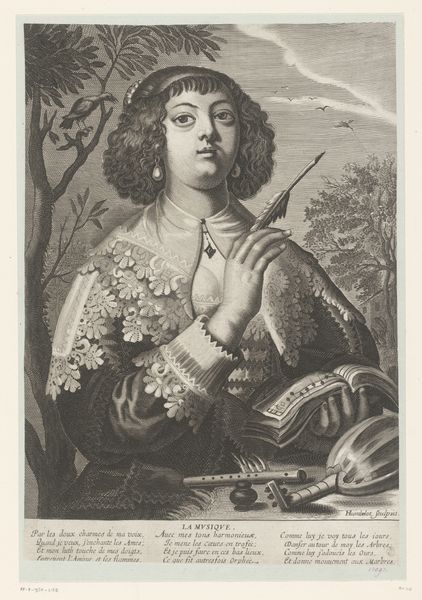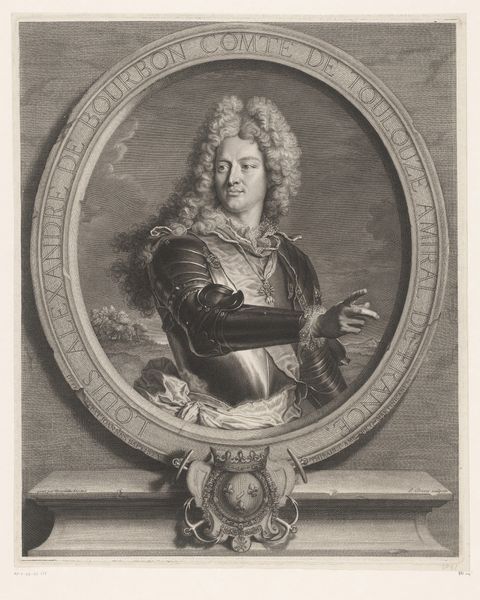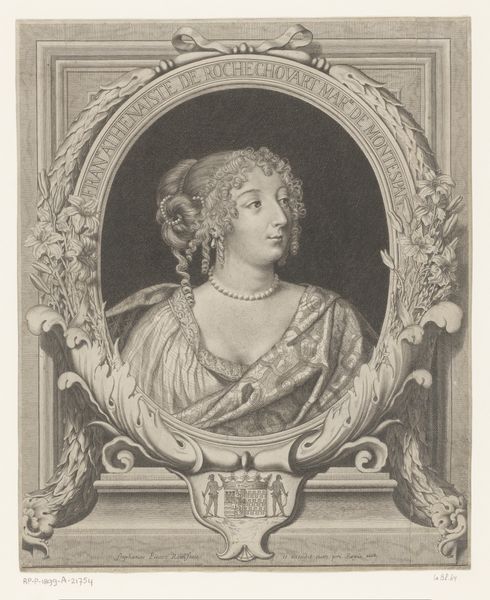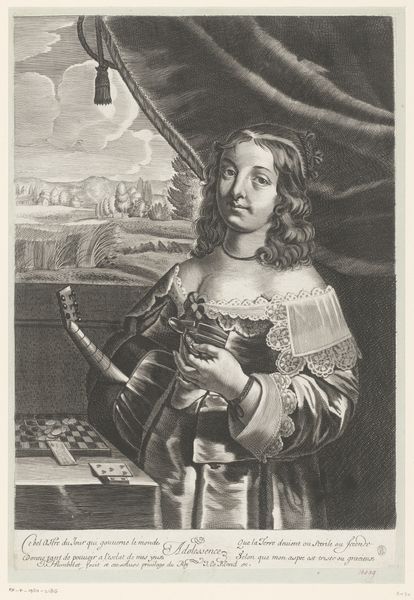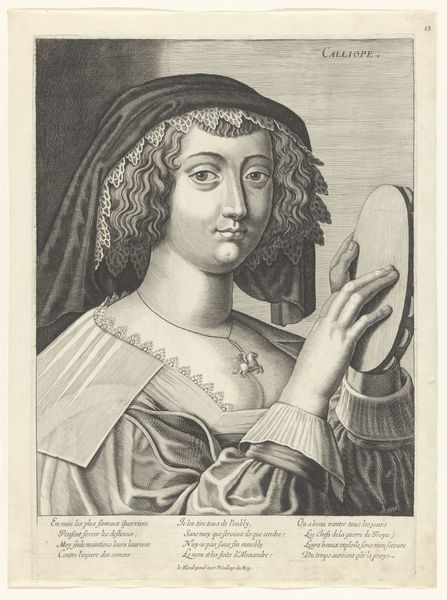
print, engraving
#
portrait
#
baroque
# print
#
line
#
engraving
Dimensions: height 320 mm, width 280 mm
Copyright: Rijks Museum: Open Domain
Jean Leblond's engraving, Melpomene, now held at the Rijksmuseum, was created sometime in the mid-17th century. This print alludes to the Greek muse of tragedy through its inscription and the prominent display of a stringed instrument. But how might we understand this work as a product of its specific time and place? France in the 1600s was a society steeped in courtly culture, where the arts served as a vital tool for projecting power. Leblond, working as an engraver, produced images for a print market that was increasingly shaped by royal patronage and academic standards. Looking closely, we can see the sitter is fashionably dressed, suggesting she is of a wealthy social standing. A woman playing an instrument, would also connote status. The verses inscribed at the bottom of the piece, may also speak of her fate in life. To further understand the nuances of this piece, historians might consult period literature on musical aesthetics or delve into the archives of institutions like the Académie Royale de Peinture et de Sculpture, founded during Leblond's lifetime. Such research helps us appreciate how art both reflected and shaped the social structures of its time.
Comments
No comments
Be the first to comment and join the conversation on the ultimate creative platform.
